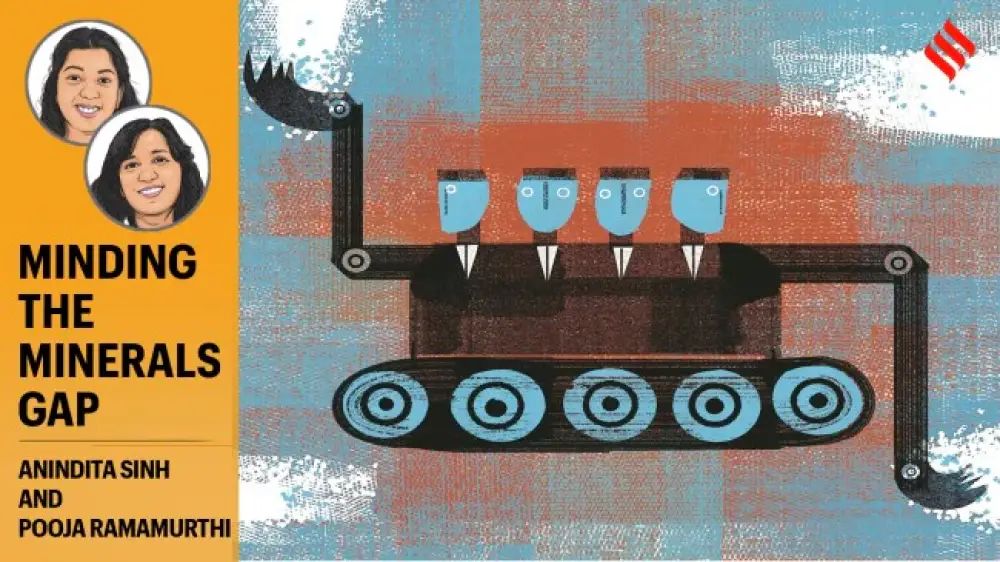
Ấn Độ tận dụng “câu lạc bộ khoáng sản chiến lược” như Quad và MSP để đa dạng hóa chuỗi cung ứng
-
Ngày 3/7, các ngoại trưởng của nhóm Quad (Ấn Độ, Nhật Bản, Úc và Mỹ) đã công bố sáng kiến Critical Minerals Initiative để đa dạng hóa và đảm bảo chuỗi cung ứng khoáng sản quan trọng toàn cầu.
-
Ấn Độ đang đối mặt với rủi ro chiến lược và kinh tế nghiêm trọng do phụ thuộc vào Trung Quốc về đất hiếm và khoáng sản quan trọng cho xe điện, tấm pin mặt trời, pin và bán dẫn.
-
Các thỏa thuận song phương gần đây với Argentina, Zambia... nhằm hỗ trợ doanh nghiệp Ấn Độ thăm dò và khai thác khoáng sản ở nước ngoài, nhưng họ đang thiếu công nghệ khai thác tiên tiến và vốn đầu tư dài hạn.
-
Đầu tư vào các quốc gia chính trị bất ổn khiến các công ty Ấn Độ dè dặt, đòi hỏi phải có cơ chế giảm thiểu rủi ro và tài chính ưu đãi từ nhà nước.
-
Các hợp tác với UAE, Anh và Mỹ tập trung vào chế biến và tái chế khoáng sản, nhưng nếu không có nguồn cung ổn định, các trung tâm này dễ trở thành tài sản bị bỏ hoang.
-
Các “câu lạc bộ khoáng sản” như MSP mang lại lợi ích khi cung cấp vốn chung, công nghệ từ Nhật Bản, Úc và hỗ trợ lựa chọn dự án chiến lược, giúp Ấn Độ vượt qua rào cản tài chính và công nghệ.
-
Tuy nhiên, cần cảnh giác với nguy cơ bị gán vai trò gia công, lưu trữ và quá cảnh, trong khi hoạt động chế tạo tinh và giá trị cao lại đặt tại phương Tây.
-
Ấn Độ phải đàm phán chặt chẽ để thúc đẩy đầu tư vào R&D, chuyển giao công nghệ và hợp tác học thuật, đặc biệt trong sản xuất pin, EV và vật liệu tiên tiến.
-
Cần có cơ chế bảo vệ nguồn cung và quyền tiếp cận tài nguyên rõ ràng, vì thay đổi chính phủ (như Mỹ) có thể đảo lộn thương mại và áp thuế/phẩm chất mới.
-
Việc tham gia các “câu lạc bộ” cũng tạo cơ hội để Ấn Độ thúc đẩy chuẩn ESG phù hợp với bối cảnh nước đang phát triển, đồng thời nâng cao tính cạnh tranh cho sản xuất nội địa.
-
Nhờ mối quan hệ sâu rộng với châu Phi và Đông Nam Á, cùng mạng lưới kiều dân mạnh, Ấn Độ có lợi thế trong khai thác, đồng thời đóng vai trò cầu nối giữa Bắc và Nam toàn cầu.
📌 Ấn Độ đang tận dụng các “câu lạc bộ khoáng sản chiến lược” như Quad và MSP để đa dạng hóa chuỗi cung ứng, giảm phụ thuộc vào Trung Quốc. Tuy nhiên, nước này phải đàm phán thông minh để bảo vệ lợi ích trong nước, thúc đẩy đầu tư vào R&D, chuyển giao công nghệ và đảm bảo nguồn cung lâu dài. Việc nâng chuẩn ESG và tận dụng vị thế với châu Phi, Đông Nam Á sẽ giúp Ấn Độ định hình lại chuỗi giá trị toàn cầu một cách công bằng và bền vững.
https://indianexpress.com/article/opinion/columns/critical-mineral-clubs-can-help-india-secure-and-diversify-supply-chains-10116901/
Critical mineral clubs can help India secure and diversify supply chains
Yet, India needs to be strategic when engaging in such groupings, to understand how it can balance international partnerships without limiting its national interests and domestic priorities
On July 3, the foreign ministers of the Quad countries — India, Japan, Australia and the US — announced the launch of the Critical Minerals Initiative for collaboratively “securing and diversifying” supply chains. These minilateral groupings or “clubs” form a key part of India’s minerals diplomacy. We analyse why India engages in mineral clubs and how to ensure that these engagements are strategic.
A recent global crisis in rare earth magnets after Beijing’s imposition of export controls has shown that India’s green industries face significant strategic and economic risks due to heavy dependence on China. Essential enablers of India’s green transition, critical minerals are vital for manufacturing technologies such as electric vehicles, solar panels, batteries, and semiconductors. With unexplored domestic reserves and a late start in the global race, India has recently signed a flurry of bilateral minerals partnerships. Agreements with resource-rich countries such as Argentina and Zambia aim to facilitate exploration and mining by the Indian government and firms overseas. However, Indian companies often lack advanced extraction technology and sufficient financial capital to commercialise domestic mining as well as operate competitively in foreign markets. Moreover, their hesitancy about investing abroad in politically unstable jurisdictions highlights the urgent need for de-risking mechanisms and concessional finance to support overseas ventures.
Meanwhile, India’s partnerships with countries like the UAE, the US and the UK focus primarily on joint ventures for mineral processing and recycling. Yet, without assured and stable supplies of critical minerals, such processing hubs risk becoming economically unviable, raising the possibility of stranded assets. These agreements must, therefore, be backed by long-term arrangements and embedded in broader supply-chain strategies to ensure their sustainability.
Minilaterals, or “clubs”, offer a unique solution where India and partner countries coordinate and co-develop projects. These small groupings of like-minded partners allow for joint technical, financial, and diplomatic resources to support innovation across the minerals value chain. They overcome financial constraints for Indian ventures by tapping into a broader pool of capital, blended finance mechanisms and export credit agencies. Indian companies can also leverage advanced technological expertise from countries such as Australia and Japan regarding exploration, mining and processing. The Minerals Security Partnership (MSP), of which India is part, offers ready-made structures for co-financing and strategic project selection.
Clubs allow India to ensure economic security, diversify supply chains, forge resilient partnerships, and secure its place in the emerging clean-tech order. Yet, India needs to be strategic when engaging in such groupings, to understand how it can balance international partnerships without limiting its national interests and domestic priorities.
The agreements also encourage “friendly stockpiling of reserves”, where member countries share resources. However, as seen with the rise of protectionist leaders such as Donald Trump, a change in administration can alter global trade dynamics, with amended trade rules including increased tariffs and quality controls. India should ensure that there are robust protection mechanisms to prevent such disruptions in resource-sharing without imposed conditionalities or restrictions, pushing for clear terms of access, transparent governance, and reciprocal obligations.
India’s ambitions under “Make in India” and “Atmanirbhar Bharat” seek to make the country self-reliant on critical minerals and green technologies, while creating incentives for exports-based minerals industries. However, increasingly, this requires compliance with global environmental, social and governance (ESG) standards. Through participation in these clubs, India can influence discourse around ESG standards, presenting the Global South perspective as opposed to unilateral imposition from Western countries. Membership also encourages India to take a more structured approach to its own domestic ESG practices, aligning industry with partner countries. While improving India’s ESG standards may see a period of growing pains, in the long term, it will help make domestic manufacturing competitive.
As India seeks to become a global green power, it must remain true to its development ethos while engaging strategically to create equitable global value chains, without becoming extractive or overly reliant on great power blocs.
Thảo luận
Follow Us
Tin phổ biến



